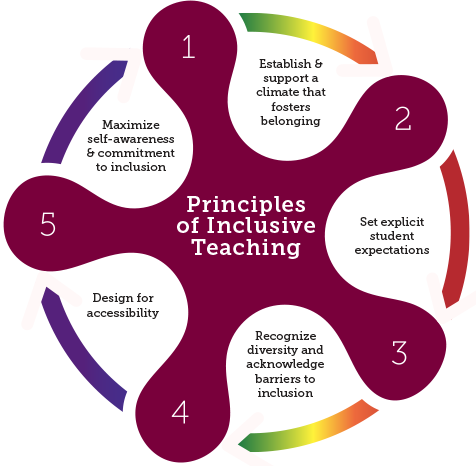The word inclusive teaching means designing a mode of learning for students that meets an equally comfortable environment catering to all needs of learners depending on their skills, talents, and capabilities. TASC standards require teaching to be student-centered and collaborate simultaneously with students and teachers (Gargiulo & Metcalf, 2017). First, it is important to incorporate diverse perspectives in class whereby issues such as gender, color, ethnicity, and avoiding tokenization of particular individuals are leveraged. For example, I will ensure my class has a mix of differently-abled students, visual learners, people living with disabilities (PWDS), and learners with executive functionality elements. In my future classroom, it is essential to ensure that students are engaged equally by not sidelining others while keeping the rest busy (Gargiulo & Metcalf, 2017). For instance, in a class with different races, group discussions should be formulated with each having at least a member from each racial representation that recognizes diversity, as seen in Figure 1 below.

Secondly, teachers should avoid using sophisticated words while teaching, which might limit learners who have English as their second language. This is because language contributes to cognitive development for a student. Additionally, using phrases or slang should be done swiftly since some learners or parents may come from regions with sensitivity in word choice (Gargiulo & Metcalf, 2017). When it comes to attending to all learner’s needs, I will ensure my teaching is centered on a one-on-one perspective where a teacher must engage a student in an in-person academic interaction which helps them to boost their confidence in a different perspective.
One of the key strategies for inclusive teaching that is must employ is supporting learners from different backgrounds, such as establishing ground rules for helping students with controversial notions about human social perspectives (Gargiulo & Metcalf, 2017). Structuring course content to cater to special groups is encouraged so that each learner can study according to the required standards. As an inclusive teacher, I believe it is essential to avoid bias by implementing the policy of name-blind grading and using various materials in class, such as lecture slides, case studies, and cocurricular activities (Gargiulo & Metcalf, 2017). For instance, when using case studies, the characters’ names should cover all the regions, not only based on one country or continent.
Reference
Gargiulo, R. M., & Metcalf, D. J. (2017). Teaching in today’s inclusive classrooms: A universal design for learning approach. Cengage Learning.